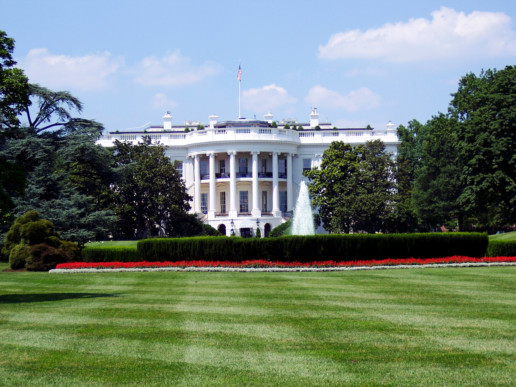HR Professionals Struggle over FMLA Compliance, SHRM Tells the DOL
In addition to the daily struggles that HR Professionals have to resolve, they are faced with many frustrations that have stemmed from the federal Family and Medical Leave Act (FMLA). Read this blog post to learn more.
In a Sept. 15 letter to the U.S. Department of Labor (DOL), the Society for Human Resource Management (SHRM) highlighted many of the challenges and frustrations that confront HR professionals as they comply with the federal Family and Medical Leave Act (FMLA).
"SHRM supports the spirit and intent of the FMLA, and our members are committed to ensuring employees receive the benefits and job security afforded by the act," wrote Emily M. Dickens, SHRM's corporate secretary, chief of staff and head of Government Affairs. "While it has been more than 25 years since FMLA was enacted, SHRM members continue to report challenges in interpreting and administering the FMLA."
The letter, developed with input from SHRM members, was in response to a request for information issued by the DOL's Wage and Hour Division on July 17. The DOL solicited comments and data "to provide a foundation for examining the effectiveness of the current regulations in meeting the statutory objectives of the FMLA."
According to Ada W. Dolph, a partner at Seyfarth Shaw who practices labor and employment law in Chicago, “SHRM’s comments echo what we are hearing from clients in terms of their challenges in implementing FMLA leave, particularly now with the patchwork of additional state and local leave requirements that have emerged as a response to COVID-19."
She added, "Our experience shows that regulatory gray areas add significant costs to the administration of the FMLA and impact the consistency with which the FMLA is applied to employees. We are hopeful that [the DOL] will implement SHRM’s proposed revisions, which provide much-needed clarity for both employers and employees."
Wide-Ranging Challenges
In its comment letter, SHRM addressed several issues its members have reported:
CHALLENGES WITH CONSISTENTLY APPLYING THE REGULATORY DEFINITION OF A SERIOUS HEALTH CONDITION
"Continuing treatment by a health care provider" as currently defined in federal regulations creates uncertainty for SHRM members on how to treat an absence of more than three consecutive days, according to SHRM's letter. "If there is not 'continuing treatment,' then it does not constitute a 'serious health condition' under the regulations," the letter explained. "However, if the employee does receive additional treatment, it's not clear whether these initial three absences are related to a serious health condition."
SHRM pointed out that several members "have suggested increasing the time period of incapacity, indicating they spend a lot of time processing employee certifications for missing four days that they believe more readily falls under sick time or paid time off."
Further guidance, including criteria and examples of when employers may obtain second and third medical opinions, "would be helpful, as many SHRM members reported declining to challenge an employee's certification at all because the conditions under which they may challenge those certifications are unclear or cumbersome," SHRM said.
Members also reported that obtaining documentation from health care providers on the need for employees to take leave to care for a family member with a serious health condition was difficult, and that doctors were often vague about identifying how the employee fits into the caregiving equation.
CHALLENGES WITH INTERMITTENT LEAVE
SHRM members reported that intermittent leave-taking is the most likely FMLA leave to be abused by employees.
"Employees are permitted to take incremental leave in the smallest increment of time the employer pays, as little as .10 of an hour, which members reported allowed employees to use the time to shield tardiness or other attendance issues," the letter read. "SHRM strongly urges [the DOL] to increase the minimum increment of intermittent or reduced schedule leave that is unforeseeable or unscheduled, or for which an employee provides no advance notice." SHRM suggested several alternative approaches.
For instance, the DOL could:
- Require that employees take unforeseeable or unscheduled intermittent or reduced schedule leave in half-day increments, at a minimum.
- Establish a smaller increment, such as two hours, that automatically applies in any instance in which an employee takes unscheduled or unforeseeable intermittent or reduced schedule leave.
Additionally, when an employee takes intermittent or reduced FMLA leave, an employer may transfer an employee to an alternative position. However, under current regulations, employers may only require such a transfer when the leave taken is for "a planned medical treatment for the employee, a family member, or a covered servicemember, including during a period of recovery…."
"Given the potential burden and hardship that intermittent and reduced-schedule leave have on employers, SHRM believes that an employer should be permitted to temporarily transfer an employee on intermittent or reduced-schedule leave to an alternative position, regardless of whether the leave is foreseeable or unforeseeable or whether it is scheduled or unscheduled," SHRM told the DOL.
CHALLENGES REGARDING EMPLOYEES WHO ARE CERTIFIED FOR INTERMITTENT LEAVE FOR CONSECUTIVE YEARS
Employees continue to regularly exhaust and replenish their 12-week FMLA entitlement, based on the rolling 12-month entitlement period, SHRM members reported.
"Combined with the Americans with Disabilities Act Amendments Act requirements to accommodate absences under some circumstances, these unrelenting absences become unreasonable and unduly burdensome to employers," SHRM commented.
Similarly, many SHRM members reported being frustrated that there weren't more mechanisms to challenge potential abuses of intermittent leave (e.g., when employees take every Friday or Monday off).
FRUSTRATION WITH EMPLOYEES NOT PROVIDING SUFFICIENT NOTICE OF THE NEED FOR LEAVE
Many employees provide notice of even foreseeable leaves after the leave has begun, noted SHRM, which recommended that notice of foreseeable leave be required prior to the commencement of leave and not "as soon as practicable."
SHRM also suggested that "a more definitive requirement be imposed so that employees understand clearly that they must provide notice of leave prior to beginning leave," and that "if an employee does not give advance notice, it should be the employee's burden to articulate why it was not practicable to provide such notice prior to the start of the leave. If they are unable to meet this burden, the regulation should permit and specify the consequences."
DIFFICULTIES OBTAINING TIMELY RESPONSES FROM EMPLOYEES AND THEIR PHYSICIANS TO SUPPORT THE REQUESTED LEAVE
If an employee fails to provide sufficient information to demonstrate that he or she may seek FMLA leave, then the employee can be required to provide additional information "to determine whether an absence is potentially FMLA-qualifying," SHRM explained. "However, there is no deadline by which the employee must provide this clarifying information, resulting in extensive, continued delays and continued administrative burdens."
SHRM recommended tightening this time frame to seven days and that the DOL "endeavor to provide firmer and clearer deadlines and notice requirements throughout the regulations."
SHRM members also reported that health-provider fees for completing paperwork often slowed or halted the certification process and asked whether providers' ability to impose these fees could be limited.
New FMLA Forms
Overall, SHRM members expressed satisfaction with recently updated FMLA forms. However, members continue to report that the information received from medical providers is often unclear and that they struggle to determine whether the reported condition constitutes a serious health condition.
The new forms do not account for the possibility that an employee does not qualify for FMLA because the employee doesn't meet the requirement of being unable to perform the functions of his or her job. "As such, we suggest that the medical provider be given the option to indicate that an employee does not meet this requirement," SHRM wrote.
Many members suggested that the DOL allow completion of online forms to speed processing times and reduce the administrative burdens of processing FMLA leave.
Among other issues, SHRM members also reported struggling with how to effectively reconcile FMLA with other leave laws enacted in the wake of the COVID-19 pandemic.
SOURCE: Miller, S. (21 September 2020) "HR Professionals Struggle over FMLA Compliance, SHRM Tells the DOL" (Web Blog Post). Retrieved from https://www.shrm.org/resourcesandtools/hr-topics/benefits/pages/hr-professionals-struggle-over-fmla-compliance-shrm-tells-the-dol.aspx
Labor Department Is Now Enforcing Coronavirus Paid-Leave Rules
As the U.S. Department of Labor gave employers sufficient time to comply with paid-leave through the Families First Coronavirus Response Act, many businesses can provide paid-sick-leave for employees if it is needed. Read this blog post to learn more.
The U.S. Department of Labor (DOL) initially gave employers time to comply with coronavirus-related paid-sick-leave and paid-family-leave mandates and correct mistakes without facing scrutiny, but the department has officially ramped up its enforcement efforts.
Under the Families First Coronavirus Response Act (FFCRA), many businesses with fewer than 500 employees must provide up to 80 hours of paid-sick-leave benefits if employees need leave to comply with a self-quarantine order or care for their own or someone else's coronavirus-related issues. The act also provides emergency paid family leave for parents who can't work because their children's schools or child care services are closed due to the pandemic.
The FFCRA's paid-leave provisions took effect April 1 and expire on Dec. 31. The DOL announced on April 20 that the nonenforcement period had officially ended, and the department issued its first enforcement order shortly thereafter. An electrical company based in Tucson, Ariz., was ordered to compensate an employee who was denied paid sick leave after he showed coronavirus symptoms and was told by a doctor to self-quarantine. The employer was ordered to pay the worker $1,600, which covered his full wages ($20 an hour) for 80 hours of leave.
"This case should serve as a signal to others that the U.S. Department of Labor is working to protect employee rights during the coronavirus pandemic," said Wage and Hour District Director Eric Murray in Phoenix. "We encourage employers and employees to call us for assistance to improve their understanding of new labor standards under the [FFCRA] and use our educational online tools to avoid violations like those found in this investigation."
We've rounded up articles and resources from SHRM Online on the FFCRA.
Paid-Sick-Leave Details
Under the FFCRA, covered employers will have to provide up to 80 hours of paid-sick-leave benefits if an employee:
- Has been ordered by the government to quarantine or isolate because of COVID-19.
- Has been advised by a health care provider to self-quarantine because of COVID-19.
- Has symptoms of COVID-19 and is seeking a medical diagnosis.
- Is caring for someone who is subject to a government quarantine or isolation order or has been advised by a health care provider to quarantine or self-isolate.
- Needs to care for a son or daughter whose school or child care service is closed due to COVID-19 precautions. (This leave can be combined with emergency paid family leave.)
- Is experiencing substantially similar conditions as specified by the secretary of health and human services, in consultation with the secretaries of labor and treasury.
Paid sick leave must be paid at the employee's regular rate of pay, or minimum wage, whichever is greater, for leave taken for reasons 1-3 above. Employees taking leave for reasons 4-6 may be compensated at two-thirds their regular rate of pay, or minimum wage, whichever is greater. Part-time employees are eligible to take the number of hours they would normally work during a two-week period. Under the legislation, paid sick leave is limited to $511 a day (and $5,110 total) for a worker's own care and $200 a day (and $2,000 total) when the employee is caring for someone else.
Family Leave and Sick Leave Work Together
The Emergency Family and Medical Leave Expansion Act (EFMLEA), which is part of the FFCRA, provides paid leave to parents who can't work because their children's schools or child care services are closed due to the pandemic. An employee may take paid sick leave for the first 10 days of leave or substitute any accrued vacation, personal leave or sick leave under an employer's policy. For the following 10 weeks, the individual will be paid at an amount no less than two-thirds of the regular rate of pay for normally scheduled hours. The individual will not receive more than $200 per day or $12,000 for 12 weeks that include paid sick leave and EFMLEA leave, the DOL stated. As of April 1, workers who have been on the payroll for at least 30 calendar days are eligible for paid family leave benefits.
More Guidance
Many employers and workers have been confused about how to apply the law or access its benefits, so the DOL has been regularly releasing compliance information and updating its Q&A document. In addition to temporary regulations, the DOL released a fact sheet for employees and a fact sheet for employers. The department also provided model workplace posters for nonfederal employers and federal employers that are covered by the mandate. The DOL will continue to add resources to its website, so employers should keep checking for updates. "Please continue to use our website as a primary source of information," said DOL Wage and Hour Division Administrator Cheryl Stanton.
Answers to the Most Common Coronavirus Questions
Would an employee who is afraid of coming to work and contracting COVID-19 be eligible for paid sick leave? Are nonprofit organizations required to comply with the FFCRA? How do the new requirements interact with collective bargaining agreements? Here are some answers to FFCRA and other common coronavirus questions.
SOURCE: SHRM. (28 April 2020) "Labor Department Is Now Enforcing Coronavirus Paid-Leave Rules" (Web Blog Post). Retrieved from https://www.shrm.org/ResourcesAndTools/legal-and-compliance/employment-law/Pages/Labor-Department-Is-Now-Enforcing-Coronavirus-Paid-Leave-Rules.aspx
Judge strikes down parts of DOL's emergency paid leave regs
Dive Brief:
- Several features of the U.S. Department of Labor (DOL)'s regulations implementing the paid-leave provisions of the Families First Coronavirus Response Act (FFCRA) exceeded the agency's authority under federal law, a federal judge has ruled (State of New York v. U.S. Department of Labor, et al., No. 20-CV-3020 (S.D.N.Y. Aug. 3, 2020)).
- Among the struck-down DOL regulations are: the final rule's work-availability requirement; its definition of "health care provider" for the purposes of excluding certain healthcare sector employees from emergency leave benefits; its requirement that an employee secure employer consent for intermittent FFCRA leave; and its requirement that documentation be provided by an employee before taking FFCRA leave.
- The federal judge permitted the outright ban on intermittent leave for certain qualifying reasons — specifically, intermittent leave based on qualifying conditions that correspond with an increased risk of infection — as well as the substance of the final rule's documentation requirement to stand. The court, the judge said, "sees no reason that the remainder of the Rule cannot operate as promulgated in the absence of the invalid provisions."
The ruling is an important one for the nation's first-ever federal paid leave law for private-sector workers. New York originally filed the suit in April following the release of DOL's FFCRA implementation guidance earlier in the month. Shortly before the lawsuit's filing, Congressional Democrats criticized DOL's final rule in a letter to Secretary of Labor Eugene Scalia that said the agency's guidance either deviated from the FFCRA's statute or did not have a basis in it.
Asked about the letter, a DOL spokesperson told HR Dive in April that the agency took "quick action to implement paid sick leave and expanded paid family and medical leave provides necessary support for America's workforce in uncertain times."
The federal judge said in the ruling that DOL faced "considerable pressure" in promulgating its final rule. "This extraordinary crisis has required public and private entities alike to act decisively and swiftly in the face of massive uncertainty, and often with grave consequence," the judge noted. "But as much as this moment calls for flexibility and ingenuity, it also calls for renewed attention to the guardrails of our government. Here, DOL jumped the rail."
Management-side attorneys expect the ruling to be appealed, Bloomberg Law reported. The decision applies nationally, creates uncertainty for employers who experienced pandemic-related shutdowns or reductions in force and requires healthcare employers to "re-examine whether they must provide paid leave" to certain employees, Sami Assad, partner at FordHarrison LLP and chair of the firm's Home Healthcare Practice Group, wrote in an article.
The FFCRA applies to U.S. employers with fewer than 500 employees, but those with fewer than 50 employees may be exempt from two of the law's paid-leave requirements. An authorized officer of the business must use a three-prong test to determine whether the employer may claim an exemption. Also, the IRS has published guidance detailing how small businesses can receive 100% reimbursement for paid leave pursuant to the FFCRA.
SOURCE: Golden, R. (04 August 2020) "Judge strikes down parts of DOL's emergency paid leave regs" (Web Blog Post). Retrieved from https://www.hrdive.com/news/new-york-judge-strikes-down-dol-emergency-paid-leave-reg/582856/
IRS promises full, immediate reimbursement for coronavirus leave
As employers are becoming subjected to the Families First Coronavirus Response Act (FFCRA), questions regarding reimbursements are being raised. Read this blog post to learn more.
Dive Brief:
- Employers subject to the Families First Coronavirus Response Act (FFCRA) will be eligible for two new refundable payroll tax credits that will "immediately and fully reimburse them" for complying with its paid leave mandate, the IRS and U.S. Department of Labor (DOL) announced March 20.
- The credits are designed to grant 100% reimbursement for paid leave pursuant to the FFCRA, DOL said. Health insurance costs are included in the credit. Employers face no tax liability and self-employed individuals will receive an equivalent credit. For the law's emergency Family and Medical Leave Act (FMLA) leave, the credit is equal to two-thirds of the employee's regular pay, capped at $200 per day or $10,000 in the aggregate. Up to 10 weeks of qualifying leave can be counted towards the credit.
- The credit available for FFCRA's paid sick time differs depending on how an employee uses the time. If the employee is unable to work because of a quarantine or self-quarantine or has COVID-19 symptoms and is seeking a medical diagnosis, employers may receive a refundable sick leave credit for sick leave at the employee's regular rate of pay, up to $511 per day and $5,110 in the aggregate, for a total of 10 days. If the employee is caring for someone with COVID-19, or is caring for a child because the child's school or child care facility is closed or otherwise unavailable due to COVID-19, employers may claim a credit for two-thirds of the employee's regular rate of pay, up to $200 per day and $2,000 in the aggregate, for up to 10 days.
Dive Insight:
The announcement, made in conjunction with the U.S. Department of the Treasury, should be welcome news to employers affected by the FFCRA, Littler Mendelson shareholder Jeff Nowak told HR Dive in an interview.
Reacting to initial news of the law's enactment, Nowak and others expressed concerns. Though the FFCRA specified that employers would be eligible to receive tax credits, Nowak said this week that many feared the timing of the credit would be "far too late … particularly for small businesses that would be out of business by this time next year." The DOL's assurance of prompt payment may ease such fears.
As news continues to develop around the FFCRA, DOL has added additional clarifications for employers to note. First, the agency stated Tuesday that the FFCRA would be implemented April 1, 2020. In the same document, it added more information around its plan to codify exemptions for certain private entities employing fewer than 50 employees. Employers choosing to seek this exemption may need to document why their business meets the criteria for an exemption. These criteria will be set forth by DOL in future regulations.
"You should not send any materials to the Department of Labor when seeking a small business exemption for paid sick leave and expanded family and medical leave," DOL said.
The agency also previously announced that it would observe a 30-day temporary period of non-enforcement of the FFCRA once the law takes effect April 1. This non-enforcement would be in effect so long as the employer in question "has acted reasonably and in good faith" to comply with the law, DOL said, but sources previously told HR Dive that employees could still bring legal action against certain non-complying employers.
Nowak noted that the tax credit provision would allow employers to recoup the maximum paid leave costs provided for by the FFCRA. In other words, if an employer provides additional paid leave beyond what is mandated by the FFCRA for a given scenario, that employer should not expect to receive a reimbursement for the cost of providing those additional amounts of leave, Nowak said.
The DOL document released Tuesday also specifies how employers should determine whether they meet the FFCRA's classification of employing fewer than 500 employees. According to Nowak, employers should look at their headcount at the time an employee requests leave. "It will be an additional burden to the employer's HR department," Nowak said. "You will be calculating coverage whenever an employee requests FMLA or paid sick leave."
DOL said it will provide a model notice of the FFCRA's requirements — which employers will then need to post in a conspicuous place on their premises — no later than March 25. Finally, the agency has said it will hold a "national online dialogue" allowing employers to comment on the DOL's compliance materials and outreach strategies related to the implementation of the FFCRA through March 29.
SOURCE: Golden, R. (25 March 2020) "IRS promises full, immediate reimbursement for coronavirus leave" (Web Blog Post). Retrieved from https://www.hrdive.com/news/irs-promises-full-immediate-reimbursement-for-coronavirus-leave/574881/
The Saxon Advisor - January 2020
Compliance Check
what you need to know
Form W-2s are due January 31, 2020. January 31 is the deadline for employers to distribute Form W-2s to employees. Large employers – employers who have more than 250 W-2s – must include the aggregate cost of health coverage.
Form 1099-Rs are due January 31, 2020. Employers must distribute Form 1099-Rs to recipients of 2019 distributions.
Form 945 Distributions. Form 945s must be distributed to plan participants by January 31, 2020, for 2019 non payroll withholding of deposits if they were not made on time and in full to pay all taxes that are due.
Section 6055/6056 Reporting. Employers must file Forms 1094-B and 1095-B, and Forms 1094-C and 1095-C with the IRS by February 28, 2020 if they are filed on paper.
Form 1099-R Paper Filing. Employers must file Form 1099-R with the IRS by February 28, 2020 if they are filed on paper.
CMS Medicare Part D Disclosure. Employers that provide prescription drug coverage must disclose to the CMS whether the plan’s prescription drug coverage is creditable or non-creditable.
Summary of Material Modifications Distribution. Employers who offer a group health plan that is subject to ERISA must distribute a SMM for plan changes that were adopted at the beginning of the year that are material reductions in plan benefits or services
In this Issue
- Upcoming Compliance Deadlines
- Traditional IRA, Roth IRA, 401(k), 403(b): What’s the Difference?
- Fresh Brew Featuring Scott Langhorne
- This month’s Saxon U: What Employers Should Know About the SECURE Act
- #CommunityStrong: American Heart Association Heart Mini Fundraising
What Employers Should Know About the SECURE Act
Join us for this interactive and educational Saxon U seminar with Todd Yawit, Director of Employer-Sponsored Retirement Plans at Saxon Financial Services, as we discuss what the SECURE Act is and how it impacts your employer-sponsored retirement plan.
Traditional IRA, Roth IRA, 401(k), 403(b): What's the Difference?
Bringing the knowledge of our in-house advisors right to you...
If you haven’t begun saving for retirement yet, don’t be discouraged. Whether you begin through an employer sponsored plan like a 401(k) or 403(b) or you begin a Traditional or Roth IRA that will allow you to grow earnings from investments through tax deferral, it is never too late or too early to begin planning.
“A major trend we see is that if people don’t have an advisor to meet with, they tend to invest too conservatively, because they are afraid of making a mistake,” said Kevin Hagerty, a Financial Advisor at Saxon Financial.
Fresh Brew Featuring Scott Langhorne
“Pay close attention to detail.”
This month’s Fresh Brew features Scott Langhorne, an Account Manager at Saxon.
Scott’s favorite brew is Bud Light. His favorite local spot to grab his favorite brew is wherever his friends and family are.
Scott’s favorite snack to enjoy with his brew is wings.
This Month's #CommunityStrong:
American Heart Association Heart Mini Fundraising
This January, February & March, the Saxon team and their families will be teaming up to raise money for the American Heart Association Heart Mini! They will be hosting a Happy Hour at Fretboard Brewing Company Wednesday, January 29, from 4 p.m. - 7 p.m. to raise money.
Are you prepared for retirement?
Saxon creates strategies that are built around you and your vision for the future. The key is to take the first step of reaching out to a professional and then let us guide you along the path to a confident future.
Monthly compliance alerts, educational articles and events
- courtesy of Saxon Financial Advisors.

Beware the Legal Pitfalls of Managing Unpaid Interns
With many college students and recent graduates trying to start a career, their first step to getting introduced to what their degree can hold for them is working as an intern to learn different roles and to learn how a business operates. The U.S. Department of Labor (DOL) has raised concerns regarding what makes an intern an "employee" or a "trainee". Read this blog post to learn more about the guidelines that pertain to bringing an intern or a "trainee" into the workplace.
A college student or recent graduate is eager to make an impression. So is the early-in-career professional who’s been laid off by another company. You placed them both in an unpaid internship program because you want to give your company a chance to evaluate them as future employees. What could go wrong?
At job sites across the United States, interns not paid or earning less than minimum wage are given all sorts of jobs: answering phones, loading paper in the copiers, managing company social media campaigns.
But, federal guidelines released by the U.S. Department of Labor (DOL) in April 2010 raise concerns that employers might decide to provide fewer internship opportunities. The guidelines, which apply to “for-profit” private-sector employers, define what makes an intern an “employee” as opposed to a “trainee.” If a court or government agency decides that interns’ work qualifies them as employees, the company could face penalties that include owing back pay; taxes not withheld; Social Security; unemployment benefits; interest; attorneys’ fees; plus liquidated damages, defined by federal law as double the unpaid wages.
Six Standards
The DOL’s Wage and Hour Division lists six factors to use in determining whether an intern is a trainee or an employee under the Fair Labor Standards Act (FLSA).
- The training, even though it includes actual operation of the facilities of the employer, is similar to what would be given in a vocational school or other educational institution.
- The training is for the benefit of the trainees.
- The trainees do not displace regular employees, but instead work under their close observation.
- The employer that provides the training derives no immediate advantage from the activities of the trainees, and on occasion the employer’s operations may actually be impeded.
- The trainees are not necessarily entitled to a job at the conclusion of the training period.
- The employer and the trainees understand that the trainees are not entitled to wages for the time spent in training.
If all of the factors listed above are met, then the worker is a “trainee,” an employment relationship does not exist under the FLSA, and the act’s minimum wage and overtime provisions do not apply to the worker.
Federal and state labor departments are cracking down on unpaid internships “due to a concern that paid jobs are being displaced and to increase payroll tax revenues,” says employment lawyer Terence P. McCourt of Greenberg Traurig in Boston.
With so much at stake, it’s a good time for HR professionals to review their companies’ internship policies to ensure that they are in compliance with government requirements.
Legal Exposure
The DOL standards state that most nonexempt individuals “suffered or permitted” to work must be compensated for the services they perform for an employer unless certain conditions are met. In general:
- The internship program must be similar to training that would be given in an educational environment, such as a college, university or trade school.
- The intern and the employer must both understand that the intern is not entitled to wages.
- The company must receive no immediate advantage from the internship and in fact may find its operations disrupted by the training effort.
- The intern must not take the job of regular employees.
Unpaid Programs on the Rise
Despite the risks, unpaid internships appear to be on the rise. In a May 2010 survey by Internships.com, an online clearinghouse for companies and would-be interns, two-thirds of the more than 300 college and university career center professionals who responded said that overall internship postings on their campuses increased from 2009 to 2010. However, more campuses reported lower numbers of paid internships than those reporting increases.
“Unpaid internships do appear to be on the rise,” says attorney James M. Coleman of the labor and employment law firm Constangy, Brooks & Smith LLP in Fairfax, Va. Whether the rise is in “reaction to the difficult economy and an effort to save on labor costs is not completely clear.”
Companies can protect themselves by having the college intern ask his professor for academic credit for the internship. Employers should coordinate with an intern’s school to determine requirements mandated by the educational institution, experts say.
An internship is more likely to be viewed as training if it provides interns with skills that can be used in multiple settings, as opposed to skills that are specific to one employer’s work environment.
Interns should be “allowed to observe aspects of the employer’s operations, such as job shadowing, without needing to perform services at all times,” McCourt says. He adds that an intern should not supervise regular employees or other interns, and the company should define the arrangement clearly and in writing, specifying that there is no expectation of a job offer at the conclusion of the internship.
HR professionals and lawyers say it may be useful for companies to keep written records of what an intern expects to gain from an unpaid program. Attorney Oscar Michelen of Sandback & Michelen in New York City suggests preserving memos, e-mails and other documentation covering what each intern does, such as attending scheduled training sessions and luncheon meetings with regular employees, and what type of training and supervision will be provided.
SOURCE: Taylor, S. (17 January 2020). "Beware the Legal Pitfalls of Managing Unpaid Interns" (Web Blog Post). Retrieved from https://www.shrm.org/hr-today/news/hr-news/pages/managingunpaidinterns.aspx
DOL updates FLSA regular rate rule
With the New Year right around the corner, it's important to know what rules are being updated. The U.S. Department of Labor has updated the "regular rate of pay" to calculate overtime pay. This standard is used to calculate overtime pay under the Fair Labor Standards Act (FLSA). Read this blog post for more information on this final rule.
The U.S. Department of Labor (DOL) has issued a final rule updating the "regular rate of pay" standard used to calculate overtime pay under the Fair Labor Standards Act (FLSA), according to a notice to be published in the Federal Register Dec. 13.
In the rule, DOL clarifies when certain employer benefits may be excluded when calculating overtime pay for a non-exempt employee, including bona fide meal periods, reimbursements, certain benefit plan contributions, state and local scheduling law payments and more. The rule also clarifies how employers may determine whether a bonus is discretionary or nondiscretionary.
The rule will take effect Jan. 12, 2020.
The rule will likely result in employers taking a closer look at their benefits packages, Susan Harthill, partner at Morgan Lewis, told HR Dive in an emailed statement.
A number of employer advocates that submitted comments on DOL’s Notice of Proposed Rulemaking (NPRM), including the Society for Human Resource Management, supported excluding employee benefits like gym memberships, tuition assistance and adoption and surrogacy services from regular rate calculations. Gym memberships and tuition assistance are generally excludable, according to DOL, but the agency said only some forms of adoption assistance would be excludable and that most surrogacy assistance payments would not be.
Employers also inquired about public transportation and childcare subsidies. In the final rule, DOL said public transportation benefits would not be excludable, noting that the agency "has long acknowledged that employer-provided parking spaces are excludable from the regular rate but commuter subsidies are not." But it did add clarifying language around childcare, saying that while "routinely-provided childcare" must be included in the regular rate, emergency childcare services — if those services are not provided as compensation for hours of employment and are not tied to the quantity or quality of work performed — may be excluded.
DOL also offered additional details about its treatment of tuition reimbursement and education-related benefits. As it stated in the NPRM, the agency said that as long as tuition programs are offered to employees regardless of hours worked or services rendered are "contingent merely on one’s being an employee," such programs qualify as "other similar payments" excludable from the regular rate. This includes payment for an employee's current coursework, online coursework, payment for an employee’s family member’s tuition and certain student-loan repayment plans, DOL said.
HR teams should respond by performing audits of the pay codes for benefits that would be impacted, Tammy McCutchen, shareholder at Littler Mendelson, told HR Dive in an interview: "This is a good time to get your calculations correct." McCutchen suggested that employers conduct audits first before deciding whether to expand benefits options in light of the rule. She added that it's an employer's responsibility to notify payroll providers of any changes to exemptions.
Employers also will need to check state laws and consult with counsel ahead of implementing changes to employees' regular rates, as those laws may differ from DOL's new rule, Harthill said. Moreover, "[t]his is an interpretive rule and it remains to be seen whether courts will defer to DOL's interpretation of the rule or if any resultant exclusions are challenged," she added.
SOURCE: Golden, R. (12 December 2019) "DOL updates FLSA regular rate rule" (Web Blog Post). Retrieved from https://www.hrdive.com/news/dol-updates-flsa-regular-rate-rule/568954/
Labor Department Issues Final Rule on Calculating 'Regular Rate' of Pay
The New Year is bringing changes to the current "regular rate" of pay definition. Recently, the U.S. Department of Labor updated the FLSA definition of the regular rate of pay. The final ruling will take effect on January 15, 2020, and will provide modernized regulations for employers. Read this blog to learn more.
Employers now have more clarity and flexibility about which perks they can include in workers' "regular rate" of pay, which is used to calculate overtime premiums under the Fair Labor Standards Act (FLSA). The U.S. Department of Labor (DOL) announced a final rule that will take effect Jan. 15, 2020.
This is the first time in more than 50 years that the DOL has updated the FLSA definition of the regular rate of pay. Here's how the new law will impact employers.
Reduced Litigation Risk
Currently, the regular rate includes hourly wages and salaries for nonexempt workers, most bonuses, shift differentials, on-call pay and commissions. It excludes health insurance, paid leave, holiday and other discretionary bonuses, and certain gifts.
Many employers weren't sure, however, if certain perks had to be included in the regular rate of pay. So instead of risking costly lawsuits, some employers were choosing not to offer competitive benefits.
Employers were concerned that, for example, if they offered gym memberships to employees, they would have to add the cost to the regular-rate calculation, explained Kathleen Caminiti, an attorney with Fisher Phillips in Murray Hill, N.J., and New York City. The new rule says that gym membership fees and other similar benefits don't have to be included.
The new rule is intended to reduce the risk of litigation and enable employers to provide benefits without fearing that "no good deed goes unpunished," Caminiti said.
The final rule largely tracks the proposed rule, noted Susan Harthill, an attorney with Morgan Lewis in Washington, D.C. But it includes more clarifying examples and provides additional insight into the DOL's views on specific benefits, she said.
This rule was relatively uncontroversial, said Tammy McCutchen, an attorney with Littler in Washington, D.C. She noted that only a few employee and union groups commented against the rule, and those comments addressed very specific points.
"Employees like these benefits, too," she said.
Clarifications
The rule clarifies that employers may exclude the following perks from the regular-rate calculation:
- Parking benefits, wellness programs, onsite specialist treatments, gym access and fitness classes, employee discounts on retail goods and services, certain tuition benefits, and adoption assistance.
- Unused paid leave, including paid sick leave and paid time off.
- Certain penalties employers must pay under state and local scheduling laws.
- Business expense reimbursement for items such as cellphone plans, credentialing exam fees, organization membership dues and travel expenses that don't exceed the maximum travel reimbursement under the Federal Travel Regulation system or the optional IRS substantiation amounts for certain travel expenses.
- Certain sign-on and longevity bonuses.
- Complimentary office coffee and snacks.
- Discretionary bonuses (the DOL noted that the label given to a bonus doesn't determine whether it is discretionary).
- Contributions to benefit plans for accidents, unemployment, legal services and other events that could cause a financial hardship or expense in the future.
"Unlike the upcoming changes to the FLSA white-collar regulations, which will have the force of law, this final rule is predominately interpretative in nature," said Joshua Nadreau, an attorney with Fisher Phillips in Boston. "Nevertheless, you should review these changes carefully to determine whether any of the clarifications are applicable to your workforce."
Employers who follow the rule can show that they made a good-faith effort to comply with the FLSA.
Paying Overtime Premiums
Under the FLSA, nonexempt employees generally must be paid 1.5 times their regular rate of pay for all hours worked beyond 40 in a week. But the regular rate includes more than just an employee's base hourly wage. Employers must consider "all remuneration for employment paid to, or on behalf of, the employee," except for specific categories that are excluded from the calculation, such as:
- Discretionary bonuses.
- Payments made when no work is performed, such as vacation or holiday pay.
- Gifts.
- Irrevocable benefits payments.
- Payments for traveling expenses.
- Premium payments for work performed outside an employee's regular work hours.
- Extra compensation paid according to a private agreement or collective bargaining.
- Income derived from grants or options.
The final rule updated and modernized the items that can be excluded from the calculation, Caminiti said. For example, the prior regulation referenced only holiday and vacation time, whereas the new rule recognizes that many employers lump together paid time off. The rule clarifies that all paid time off will be treated consistently as to whether it should be included in the regular rate.
The DOL eliminated some restrictions on "call-back" and similar payments but maintained that they can't be excluded from an employee's regular rate if they are prearranged.
The rule also addresses meal breaks, scheduling penalties, massage therapy and wellness programs.
"Some of these benefits didn't exist even a decade ago," McCutchen noted.
Harthill observed that the line between discretionary and nondiscretionary bonuses has created uncertainty and litigation. So the final rule's text and preamble give more examples and explanations about certain bonuses in response to commenters' requests. For example, the final rule provides more clarity about sign-on and longevity bonuses, but the DOL declined to specifically address other types of bonuses commenters asked about.
Action Items
"Now is the time for a regular-rate audit," McCutchen said. Compensation specialists should gather a list of all the earnings codes they're currently using for nonexempt employees, note each one they are including in the regular rate and compare that with the new rule to see if changes need to be made.
Most employers presently are not including paid sick time, tuition reimbursement and other perks in the regular-rate calculation, McCutchen noted, and DOL has confirmed the practice.
Now is also a good time for employers to decide if they want to start providing certain perks that are popular with employees, she said.
Harthill noted that it is important for employers to check whether the relevant state law tracks or departs from the federal law, because state laws might have stricter rules about overtime calculations.
SOURCE: Nagele-Piazza, L. (12 December 2019) "Labor Department Issues Final Rule on Calculating 'Regular Rate' of Pay" (Web Blog Post). Retrieved from https://www.shrm.org/ResourcesAndTools/legal-and-compliance/employment-law/Pages/Labor-Department-Issues-Final-Rule-on-Calculating-Regular-Rate-of-Pay-.aspx
It’s time to consider a wage and hour audit
A record $322 million of unpaid wages were recovered for the 2019 fiscal year, according to the Department of Labor (DOL). With the new salary threshold taking effect January 1, it may be a good time to consider conducting a wage and hour audit. Read the following blog post from Employee Benefit News to learn more.
Those who believed the Trump administration would scale back the Obama-era Department of Labor’s aggressive enforcement of wage and hour laws may be surprised to learn that the DOL recently announced that it recovered a record $322 million in unpaid wages for fiscal year 2019. This is $18 million more than that recovered in the last fiscal year, which was the previous record.
The agency has set records in back wages collected every year since 2015, according to data released by the DOL. This year, the average wages DOL recovered per employee were $1,025. The agency’s office of federal contractor compliance also announced that it had recovered a record $41 million in settlements over discrimination actions involving federal contractors, an increase of 150% over the last fiscal year.
Effective Jan. 1, the new salary threshold that most salaried employees must earn to be exempt from overtime pay will be $35,568, or $684 per week, under the final rule issued by the DOL in September.
With the new salary threshold taking effect soon, and the DOL continuing to aggressively enforce wage and hour laws, it is a good time to consider conducting a wage and hour audit to ensure that employees are properly classified as exempt or nonexempt and that other pay practices comply with the law.
Employers who did this in 2016, only to find out later that the Obama administration’s proposed hike in the salary threshold would not take effect, may have a strong feeling of déjà vu. But this time, there does not appear to be any viable legal challenge that would delay or block the salary threshold change, so employers must be prepared to either increase salaries of “white-collar” exempt employees (who earn less than $35,568) or reclassify them as hourly employees by January.
Among other things, a wage and hour audit should include the following:
- Review all individuals classified as independent contractors;
- Review all employees classified as exempt from overtime under one or more “white-collar” exemptions (administrative, executive, and professional), who must earn at least the $35,568 salary threshold beginning January 1, 2020;
- Review all other employees classified as exempt from overtime, including computer and sales employees; and
- Review all individuals classified as interns, trainees, volunteers, and the like.
In addition to ensuring whether employees are properly classified as exempt or nonexempt, a thorough wage and hour audit should look at a number of other issues, including timekeeping and rounding of hours worked, meal and rest breaks, whether bonuses and other special payments need to be included in employees’ regular rate of pay for calculating overtime, and payments besides regular wages, such as paid leave and reimbursement of expenses.
SOURCE: Allen, S. (8 November 2019) "It’s time to consider a wage and hour audit" (Web Blog Post). Retrieved from https://www.benefitnews.com/opinion/employers-should-consider-a-wage-and-hour-audit
DOL proposes rule on digital 401(k) disclosures
A new rule has been proposed by the Department of Labor (DOL) that is meant to encourage employers to issue retirement plan disclosures electronically. This rule would allow plan sponsors of 401(k)s and other defined-contribution plans to default participants with a valid email address to receive plan disclosures electronically. Read the following blog post to learn more.
The Department of Labor proposed a rule Tuesday that's meant to encourage more employers to issue retirement plan disclosures electronically to plan participants.
The rule would allow sponsors of 401(k)s and other defined-contribution plans to default participants with valid email addresses into receiving all their retirement plan disclosures — such as fee disclosure statements and summary plan descriptions — digitally instead of on paper, as has been the traditional route.
Participants can opt-out of e-delivery if they prefer paper notices. The proposed rule covers the roughly 700,000 retirement plans subject to the Employee Retirement Income Security Act of 1974.
"DOL rules have largely relied on a paper default," said Will Hansen, chief government affairs officer for the American Retirement Association. "Everything had to be paper, unless they opted into electronic default. This rule is changing the current standing."
Proponents of digital delivery believe it will save employers money and increase participants' retirement savings. The DOL also believes digital delivery will increase the effectiveness of the disclosures.
Plan sponsors are responsible for the costs associated with furnishing participant notices, and many small and large plans pass those costs on to plan participants, Mr. Hansen said. The DOL estimates its proposal will save retirement plans $2.4 billion over the next 10 years through the reduction of materials, printing and mailing costs for paper disclosures.
Opponents of digital delivery maintain that paper delivery should remain the default option. They have noted that participants are more likely to receive and open disclosures if they come by mail, and claim that print is a more readable medium for financial disclosures that helps participants better retain the information.
"We are reviewing the proposal carefully and look forward to providing comments to the Department of Labor, but we already know that in a world of information overload, many people prefer to get important financial information delivered on paper, not electronically," said Cristina Martin Firvida, vice president of financial security and consumer affairs at AARP. "The reality is missed emails, misplaced passwords and difficulties reading complex information on a screen mean that most people do not visit their retirement plan website on a regular basis."
President Donald J. Trump issued an executive order on August 2018 calling on the federal government to strengthen U.S. retirement security. In that order, Mr. Trump directed the Labor secretary to examine how the agency could improve the effectiveness of plan notices and disclosures and reduce their cost.
The DOL proposal, called Default Electronic Disclosure by Employee Pension Benefit Plans under ERISA, is structured as a safe harbor, which offers legal protections to employers that follow the guidelines laid out in the rule.
Retirement plans would satisfy their obligation by making the disclosure information available online and sending participants and beneficiaries a notice of internet availability of the disclosures. That notice must be sent each time a plan disclosure is posted to the website.
A digital default can't occur without first notifying participants by paper that disclosures will be sent electronically to the participant's email address.
The 30-day comment period on the proposal starts Wednesday. In addition, the DOL issued a request for information on other measures it could take to improve the effectiveness of ERISA disclosures.
SOURCE: Lacurci, G. (22 October 2019) "DOL proposes rule on digital 401(k) disclosures" (Web Blog Post). Retrieved from https://www.investmentnews.com/article/20191022/FREE/191029985/dol-proposes-rule-on-digital-401-k-disclosures








